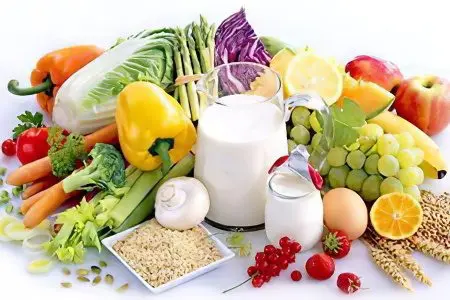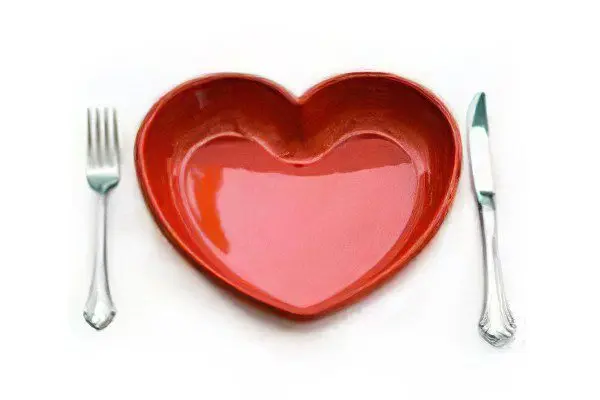Contents
Atherosclerosis is a formidable and practically asymptomatic disease in the early stages, annually claiming the lives of millions of people around the world. Today, there are effective methods of drug therapy for this pathology, but it has been proven that treatment is only symptomatic if the patient does not change his lifestyle. The fact is that atherosclerosis is endogenous in nature and completely depends on the characteristics of the diet and metabolism of the patient. This means that a competent and rational approach to nutrition is one of the necessary elements of therapy (and perhaps the most important).
Allowed products for atherosclerosis
In the minds of the majority, the opinion has taken root that a diet is an unpleasant and even painful occupation, since it forces you to abandon most of the “tasty” foods in favor of “healthy” ones. However, the list of products allowed for use in atherosclerosis is quite wide.
The main rule of nutrition in the atherosclerotic process is to minimize the consumption of atherogenic foods (that is, those foods that are rich in animal or trans fats).

Here are the allowed products:
Meat. For normal protein metabolism and synthesis of cellular structures, meat is necessary, therefore, rejection of it is unacceptable. However, it is worth choosing lean varieties, such as beef, veal, chicken, turkey (preferably, because turkey has even less fat), rabbit;
A fish. You can choose any variety of sea and river fish (cod, salmon, tuna, perch, pike perch). Fish is rich in phosphorus, as well as polyunsaturated fats, therefore it helps to eliminate the so-called. “bad” cholesterol (as you know, it is “bad” cholesterol that is one of the culprits of atherosclerosis);
Fruits vegetables. Preferably fresh, at least 350-400 grams per day. The best choice would be tomatoes, beets, cucumbers, apples, cabbage, oranges, etc. Many fruits and vegetables have the ability to destroy fat layers on the walls of blood vessels, so they should be consumed first. Among them are garlic and beets. Flaxseed works great;
Cereals, bran, peanuts, bread. Bran and cereals are a storehouse of gluten and fiber. These substances prevent the absorption of fats through the walls of the intestine into the blood. Oats, buckwheat, millet must be on the table, as well as bread. Of the nuts, peanuts and walnuts have the most pronounced anti-atherosclerotic effect;
Kelp. Seaweed is rich in iodine and other trace elements that contribute to normal metabolism. However, it must be borne in mind that sea kale is contraindicated in persons with hyperthyroidism. In such patients, the use of kelp can lead to a deterioration in metabolic processes, including lipoprotein ones;
Chicory. Recognized as an assistant in the fight against atherosclerosis. They should replace teas and coffees.
Se-fat or low-fat fermented milk products;
In small quantities, it is permissible to include ham, sausages, low-fat cheeses in the diet;
Harmful foods for atherosclerosis
Harmful foods to avoid include:
Fatty meats, lard. They contain significant amounts of unhealthy fats;
Margarine, spreads. It is better to use a little natural butter. Margarines and spreads are made from trans fats, which are extremely difficult for the body to process and increase the concentration of LDL in the blood;
Sausages, frankfurters, sausages, sausages;
Fatty and strong meat broths;
chicken skin;
Fast food;
Fatty sauces (mayonnaise, etc.);
Hard cheeses, condensed milk;
Sweet pastry because it contains a large amount of sugar.
Restricted products

It is allowed to use in moderation:
Offal (liver, kidneys, etc.);
Honey;
Alcohol. It has a positive effect on the dynamics of cholesterol levels. Preference should be given to malt whiskey and red wine. The therapeutic dose is no more than 50-100 ml per week. Should not be abused;
Soy sauce;
Egg. Eggs are recognized leaders in cholesterol content. But it should be noted that cholesterol from foods is no more than 25% of the total level of this substance in the body. Cholesterol in an egg can go either “good” or “bad”, depending on the cooking method and the foods consumed with it. In addition, eggs are rich in lecithin, which lowers blood cholesterol levels. This means that a boiled egg or an omelette will not only not hurt, but will also help in the fight against atherosclerosis, and an egg salad with mayonnaise or scrambled eggs with sausage will increase the concentration of the substance;
Semolina and rice porridge;
Strong teas, coffee.

The menu should be compiled individually, based on the patient’s vital signs, metabolic characteristics, age, gender, weight. Nutrition should be fractional, at least 5 times a day in small portions for better absorption.
Monday
First meal: oatmeal, vegetable salad, chicory, or weak coffee.
The second meal: a piece of boiled meat, a fruit of your choice, a small amount of cottage cheese.
The third meal: cabbage soup, a piece of boiled meat, potatoes stewed with zucchini, a decoction of dried fruits.
Fourth meal: kefir.
Fifth meal: baked fish, mashed potatoes, fruit of your choice, chicory or a glass of weak tea.
Tuesday
First meal: scrambled eggs, millet, chicory or weak coffee.
Second meal: vegetable salad (cucumbers and fresh cabbage).
The third meal: zucchini soup with barley, steamed chicken cutlets, berry broth.
Fourth meal: cottage cheese and orange (or apple).
Fifth meal: porridge with pumpkin, boiled fish.
Wednesday
First meal: fat-free cottage cheese, apple, tea or chicory.
Second meal: cottage cheese casserole.
The third meal: vegetable soup with rice, steam meatballs, kelp salad, dried fruit decoction.
Fourth meal: kefir.
Fifth meal: boiled fish with mashed potatoes, carrot-garlic salad with vegetable oil, weak tea.
Thursday
First meal: barley porridge with tomato sauce, fresh cucumber and weak tea.
Second meal: cheese sandwich, a glass of tea.
The third meal: borscht, fish steam cutlets, rosehip tincture, a fresh vegetable of your choice.
Fourth meal: low-fat cottage cheese.
Fifth meal: pilaf, cabbage salad, a glass of yogurt.
Friday
First meal: banana, a glass of tea.
Second meal: yogurt and a fresh apple.
The third meal: cabbage soup, cabbage salad, boiled beets with butter, berry broth.
Fourth meal: tea with dry biscuits.
Fifth meal: baked fish, vegetable salad, a glass of weak tea.
Saturday
First meal: oatmeal porridge, a glass of tea.
The second meal: a sandwich with low-fat ham and a glass of kefir.
The third meal: beetroot, steam cutlets, vegetable salad and fruit broth.
Fourth meal: cottage cheese.
Fifth meal: fish meatballs, fresh cabbage salad, a glass of kefir.
Sunday
First meal: cottage cheese casserole, banana, chicory.
Second meal: yogurt.
The third meal: chicken soup, pasta and chicken steam cutlets, dried fruit decoction.
Fourth meal: kefir.
Fifth meal: boiled potatoes, fish cutlets, cabbage, cucumber and tomato salad, a glass of weak tea.
In addition to the above, every day it is permissible to consume 200-250 grams of rye and wheat bread (in combination).
Thus, in the diet, it is important to control the fat content of the foods consumed, as well as to be careful about eating foods rich in cholesterol. Food should be fractional. In addition, it is necessary that the portion taken each time does not exceed 150-300 grams in weight.
[Video] Dr. Evdokimenko, Academician of the Academy of Medical Sciences of the Russian Federation, will tell you how to lower cholesterol:









